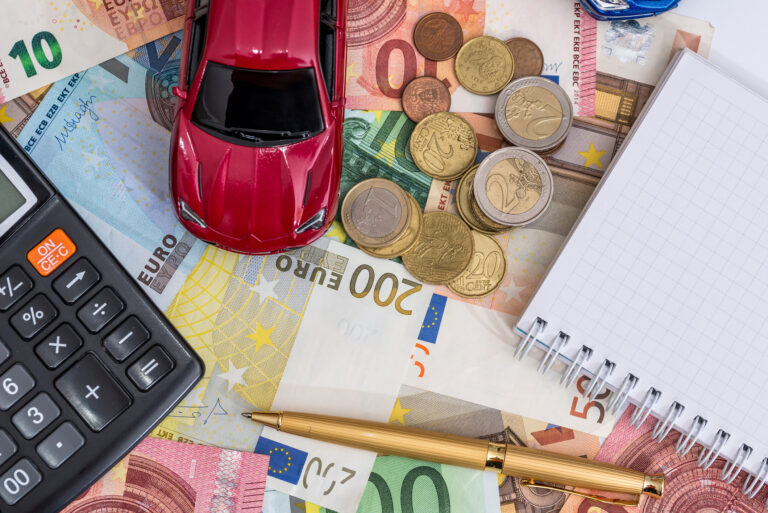For a car, coolant is one of the elementary things that keep the engine running smoothly. Similar to the correct oil level, drivers should therefore also pay attention to this component and top up the coolant if necessary. Without it, there is a risk of engine damage, which can lead to serious accidents, especially on country roads and motorways. Here we explain what to look out for when topping up the coolant and which coolant is the right one.
Car coolant - What do you need to look out for?
The cooling water for a car engine ensures that it does not overheat. This is because the way an engine works also means that a lot of heat is generated. The engine coolant counteracts this and cools the engine down to such an extent that the vehicle can be driven without engine damage and restrictions. Sufficient coolant is therefore particularly important and should be checked regularly alongside the oil level and the like.
As a rule, the coolant rarely needs to be changed or topped up. However, unnoticed defects in the radiator or the hoses can cause the coolant to leak and reduce the cooling effect. This manifests itself in the indicator light for the coolant lighting up or the engine becoming unusually hot while driving. The coolant level should also be checked if stains form under the car which indicate that fluid is leaking. In most vehicles, this can be done in the engine compartment. There is usually a white or transparent container there that shows the coolant level. If it is too low, it should be topped up urgently.
Note:
If you notice that the coolant level keeps dropping even though you have topped up the coolant, you should visit a workshop. You may then suspect that there is a leak. Also pay attention to these indications of insufficient coolant:
- the engine becomes unusually warm or even hot
- the indicator light for the coolant lights up or emits a warning tone
- unusual stains under the car
- Information from the on-board electronics
Caution: Only check the coolant in the engine compartment when the engine is cold. Due to the high temperatures while driving, the coolant also becomes very hot: often over 100 °C. This can lead to serious scalding. This can lead to serious scalding. In addition, filling a cold fluid into a hot engine can damage it.
Topping up the coolant - how it's done
Drivers do not usually have to go to the workshop to top up the coolant. As the coolant reservoir is easily accessible in the engine compartment of most vehicles, the required amount of coolant can be easily topped up yourself. However, you should make sure that you buy authorised coolant. This is because - contrary to what the name suggests - coolant is not pure water, but a special mixture of the antifreeze monoethylene glycol, distilled water and other additives such as rust inhibitor.
There are numerous different coolants to choose from on the market. Either as a concentrate, which has to be mixed with water yourself, or as a ready-mix, which can be filled in directly. Which coolant should be used depends on the vehicle and its manufacturer. So make sure you buy the right product for your car. Information on this can usually be found in the handbook. Once the coolant is ready to use or correctly mixed, it can simply be poured into the coolant reservoir in the vehicle - again, please only do this when the engine is cold to avoid injury.
Fill at least up to the minimum indicator, but no higher than the maximum indicator. The coolant level is best between these two markings.
Mixing coolant - or not?
It is advisable to always use the same coolant and not to mix different types or manufacturers. This is the only way to ensure that the coolant retains its cooling function and does not damage the engine. For example, mixing silicate-containing and silicate-free coolants risks rust damage. This is because a chemical reaction between the two types reduces the important anti-rust effect.
You can find out which coolant is suitable for your vehicle in the manual or operating instructions. Manufacturers often also recommend special agents or manufacturers. These can be recognised, for example, by their type designation such as G12+, G13 or G12++. However, the colours give no indication of the actual chemical composition. This is because the colouring is not standardised and can therefore be freely selected by the manufacturer. As a result, however, some manufacturers have developed standards that allow the colour to provide an indication of the composition, at least for them. However, a general mixing ratio cannot be derived from the colour of the coolant and is at most binding within a manufacturer's range.
Colours of coolant - examples
Although there is no uniform standard for the colour of the coolant, certain colours are used particularly frequently for specific coolants. For example, silicate-free coolants are often coloured red, while those containing silicate are blue or purple. Si-OAT coolants, which combine the advantages of both groups, are usually yellow or orange in colour. But be careful, always check the actual composition and do not rely on the colour alone.
Car losing coolant - What you can do
If your car loses coolant, you should visit a workshop as soon as possible, as coolant loss can lead to serious engine damage and accidents. Coolant loss is often caused by damage to hoses (e.g. due to marten bites), defects in the radiator or other engine components or defective seals: Things that laymen cannot repair themselves. If the loss is only minimal, you can bridge the gap to the workshop by topping up the coolant. If the loss is high, you should no longer move the car and call a towing service. Especially if the engine is already significantly overheated.
If you do not have any coolant to hand, you can also top up with distilled water if necessary. However, you should then ensure that the recommended mixing ratio is restored with the correct coolant as quickly as possible in order to avoid damage. Do not use normal performance water. Its limescale content can lead to deposits and make hoses and seals porous.
FAQ about topping up coolant
Why is coolant important?
The processes in a car's engine generate high temperatures. The coolant and the cooling function of the radiator reduce these temperatures and lead to better engine performance and longer usability.
learn moreWhich coolant must not be mixed?
Different coolants should generally not be mixed. In particular, mixing silicate-free and silicate-containing coolants reduces corrosion protection and leads to rust more quickly.
learn moreCan I change the coolant myself?
A complete change is difficult to do yourself due to the built-in reservoir and should be carried out in a workshop. However, every driver can top up the coolant themselves. Make sure you use the correct coolant and only top it up when the engine is cold.
learn moreWhy does my car consume so much coolant?
There is probably a defect in the radiator or a leaking hose. It is best to have this checked in a workshop and repaired if necessary.
learn moreIs it possible to mix red and blue coolant?
Mixing different coolants is generally not recommended in order to avoid damage to the engine.
learn more




